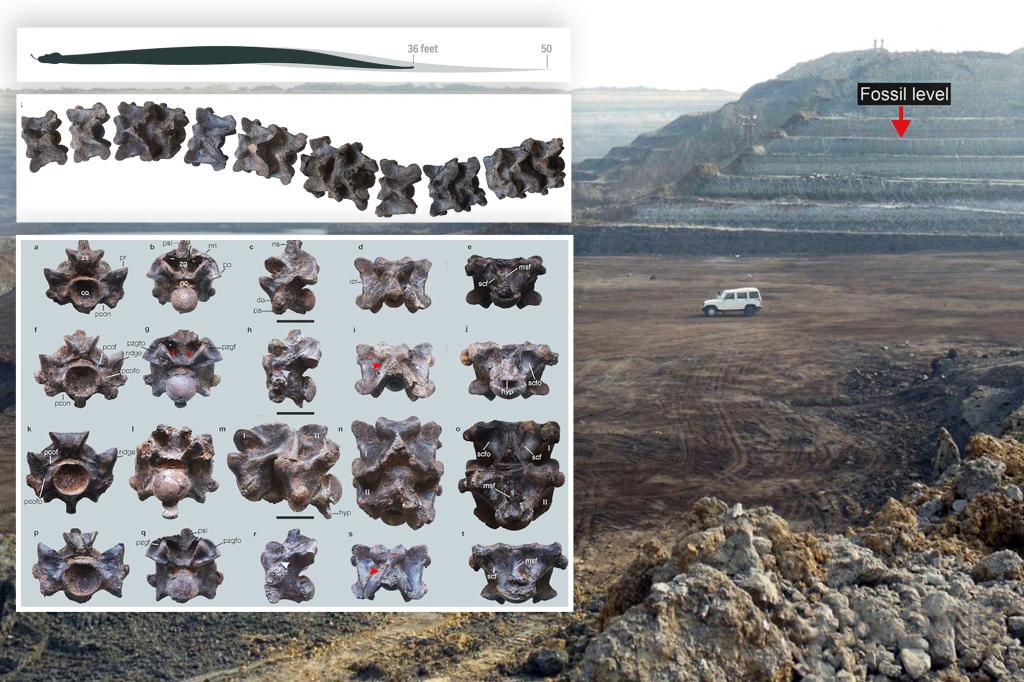Researchers recently discovered the fossilized remains of a colossal snake that lived as far back as 47 million years ago in India. Estimated to be between 36 to 50 feet in length, this enormous python, named Vasuki indicus, weighed around 2,200 pounds or roughly a ton. Despite its massive size, the researchers believe that this snake was a slow-moving ambush predator that likely subdued its prey through constriction rather than venom. The snake was named after the mythical snake king Vasuki, who wraps around the neck of the Hindu deity Shiva.
The fossils of the Vasuki indicus were found near a coal mine in India and consisted of 27 vertebrae bones. These bones were discovered by Sunil Bajpi in 2005, and researchers determined the size of the snake by comparing the fossil vertebrae to those in skeletons of living snakes. Despite being slightly smaller than the largest known Tyrannosaurus rex specimen, the Vasuki indicus is believed to still have been one of the longest slithering reptiles to ever roam the Earth.
The environment in which the Vasuki indicus lived was also revealed by the discovery of other fossils near the snake, including catfish, turtles, crocodiles, and primitive whales. These fossils provided insights into the potential diet of the snake and its ecosystem. Co-author of the study, Debajit Datta, compared the Vasuki indicus to Kaa from “The Jungle Book,” envisioning it as a majestic and gentle giant that may have moved sluggishly through the swamp like an endless train.
The Vasuki indicus is similar in size to another ancient giant snake called Titanoboa, which was approximately 42 feet long and lived in what is now Colombia 60 million years ago. Both of these giant snakes lived during a time when Earth’s temperatures were scorching hot. Jason Head, a paleontologist from Cambridge University, noted that these large snakes required high temperatures to grow, reflecting the environmental conditions of the time. The majestic size and slow-moving nature of these ancient snakes have fascinated researchers, offering a glimpse into the prehistoric world of giant reptiles.
The discovery of the Vasuki indicus adds to the growing body of knowledge about the diversity and size of prehistoric reptiles. By studying the fossilized remains of this colossal snake, researchers can piece together a clearer picture of the ancient ecosystems and the interactions between different species. The slow-moving nature and large size of the Vasuki indicus provide insights into how such creatures evolved and survived in their environments. The legacy of these giant snakes continues to captivate scientists and inspire further research into the history of life on Earth.
As researchers continue to uncover the secrets of the ancient world, the discovery of the Vasuki indicus highlights the incredible diversity and adaptations of prehistoric creatures. By piecing together the puzzle of the past through fossil discoveries, scientists can gain a better understanding of the evolutionary history of reptiles and the environments in which they lived. The discovery of this colossal snake sheds new light on the fascinating world of giant reptiles that once roamed the Earth, offering a glimpse into a time long before humans dominated the planet.


